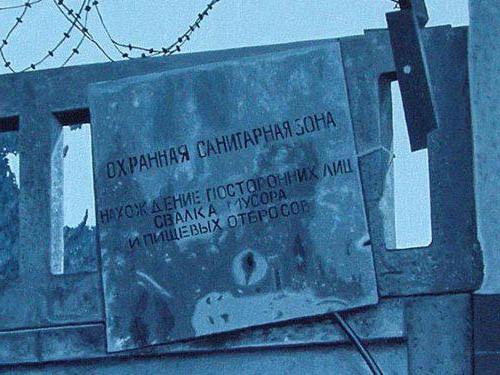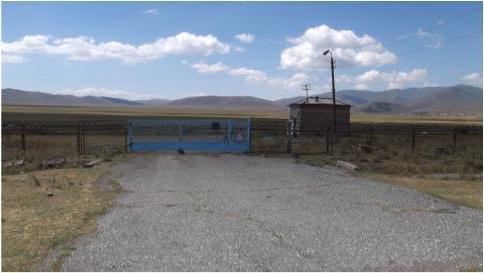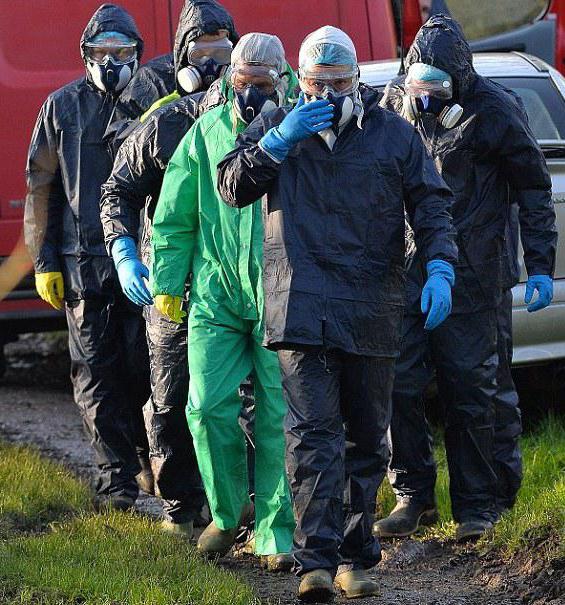Sanitary protection zones are territories in which there is a special regime for their use. They run along the boundaries of hazardous / hazardous facilities and industries. 
The relevance of the SPZ
Sanitary zones are formed to ensure the safety of citizens, protect them from the negative effects of harmful emissions into the atmosphere, noise and industrial waste. The presence of such territories allows industries to carry out activities and operate hazardous facilities without additional costs for air cleaners, sound insulators and other filters. The requirements for the development of sanitary zones apply to the design, placement, construction, use of newly constructed and reconstructed objects:
- Of transport.
- Agriculture.
- Communication.
- Pilot production.
- Municipal purpose.
- Industrial production.
- Trade.
- Of sports.
- Catering and other facilities serving as a source of environmental impact.
The need to create a sanitary zone arises in cases when the level of pollution outside the production sites exceeds 0.1 MPC or PDU.
Documenting
The draft justification for the size of sanitary protection zones is based on hazard class productions and facilities. The documentation indicates the requirements for the area of such territories. The documentation indicates the conditions under which it is allowed to review the sizes of sanitary protection zones of industrial enterprises, the procedure and methods for their establishment for specific industries, facilities or their complexes.
It also establishes restrictions on the use of SPZ plots / territories, requirements for the placement of objects within their boundaries, and improvement. The project also contains rules regarding the formation of sanitary communication gaps that pose a certain danger (pipeline, rail, road, aviation, etc.). For a number of objects compilation is a mandatory requirement Safety Data Sheets. The presence of this document reduces the likelihood of industrial emergencies. 
Federal Law No. 52
This normative act regulates the provision of sanitary welfare for people living in proximity to hazardous facilities. In accordance with this document, special territories should be established around industries and facilities that relate to sources of environmental and health impacts. The size of the sanitary protection zone of the enterprise reduces the negative impact of atmospheric pollution (biological, chemical, physical) to the parameters determined by hygiene standards. Around the facilities and industries related to 1 and 2 cells. hazard, the SPZ is established in such an area that the harmful effect is further reduced to indicators of acceptable risk to human health. In accordance with its functional purpose, territories of this type act as a barrier, providing a level of security for citizens in the normal operation of facilities.
How to determine the size of the sanitary protection zone?
The process of establishing the approximate parameters of the territory involves two successive stages. The rationale for the size of the sanitary protection zone includes the following stages:
- Estimated.The preliminary size of the sanitary protection zone of the enterprise depends on the measurement of dispersion of pollutants in the air and the physical effect on it (vibration, noise, etc.).
- Installed. The final size of the sanitary protection zone is established in accordance with field observations and measurements, which confirm the calculated indicators.
The main criterion in the development of documentation and the creation of SPZ is the fact that the maximum permissible concentration (MPC) of polluting compounds for the atmosphere of settlements and the maximum permissible levels (MPC) of physical impact on air is exceeded on its external border and beyond it. For production facilities, facilities or their units (complexes), a single design and final size of the sanitary protection zone is established. In this case, total emissions into the atmosphere and the physical influence of sources located within the boundaries of a single territory are taken into account. 
Security objects
Organizations, industrial production, their complexes, structures, acting as sources of impact on public health and the environment, are required to separate their sites with sanitary zones from:
- Residential development.
- Resort areas.
- Landscaping and recreational areas.
- Recreation areas.
- Sanatoriums.
- Medical institutions of a stationary type.
- Territories of cottage development and gardening partnerships collective and individual country and garden plots.
Breaks
Legislation requires compliance with the size of the sanitary protection zone from:
- Autodrome.
- Runway.
- Lines of railway transport, subway.
- Parking lots and garages.
From these sources of physical, biological or chemical exposure, a distance is established that reduces the negative impact to the parameters of hygiene standards. The size of the sanitary protection zone from the race track or other other facility indicated in the list above is calculated individually in each case. At the same time, the dispersion indicators of atmospheric pollution and physical effects (electromagnetic fields, vibration, noise, etc.) are taken into account with further field measurements and studies. 
Estimated SPZ parameters
As mentioned above, the size of the sanitary protection zone is set in accordance with the hazard class of the facility:
- 1 cl. - 1000 m.
- 2 cl. - 500 m.
- 3 cl. - 300 m.
- 4 cl. - 100 m.
- 5 cl. - 50 m.
The size of the sanitary protection zone for an object of class 1 or 2 may vary by decision of the State Chief Physician of the Russian Federation or his deputy in the manner provided for in regulatory enactments. For productions or complexes of other categories, the adjustment is carried out by the regional head physician or his deputy. The size of the sanitary protection zone for the metal construction workshop is 100 m. This facility, in accordance with SanPiN, belongs to hazard class 4. The size of the sanitary protection zone from the fire station is 50 m. According to the regulations, this facility is included in the fifth hazard class.
Important points
Measurements of physical impact, laboratory studies of air are carried out at the boundary of the SPZ of facilities and industries, in residential buildings. This obligation lies with the bodies accredited in the manner prescribed by law for the performance of this kind of work. Designing of SPZ is carried out at all stages of development of construction plans, operation and reconstruction, urban planning documentation for each individual production, facility or complex. The establishment of boundaries and the determination of the size of sanitary zones for objects 1-3 hazard classes is mandatory.
Additional measures
The project of sanitary zones for the construction of new, technical re-equipment or reconstruction of existing facilities, industries and buildings should include funds and measures for the organization of sanitary protection zones. These include, among other things, relocation of residents if necessary.The implementation of all the measures envisaged is required to ensure the officials of these industries and facilities. 
Borders
The limits of sanitary protection territories are established directly from sources of physical, chemical, as well as biological exposure, or from the line of a land plot that belongs to an object / industrial enterprise for conducting relevant economic activities and is drawn up in the established manner. Such an allotment is referred to in the documents as a production site. SPZ parameters are set to the outer line of the land plot. In accordance with the characteristics of emissions for industries and facilities, for which the chemical effect on the atmosphere acts as the determining factor in determining the sanitary zone, its size passes from the source of emissions or from the boundary of the industrial site.
Limitations and Tolerances
In areas with pollution indicators exceeding hygienic standards, it is not allowed to place production facilities and facilities that act as a source of negative impact on the health of the population and its environment. For operating complexes, reconstruction / re-profiling is allowed provided that all types of exposure are reduced to MPC or PDU. After carrying out the necessary measures, an expert assessment of industrial safety is mandatory. If the size of the estimated SPZ and obtained in accordance with the risk check (for objects 1-2 cells), field indicators of measurements and studies of physical, biological, chemical effects on the atmosphere do not coincide, the decision on the area of the zone is made according to the option that will be provided maximum protection of public health. 
SPZ reduction
Non-production facilities may enter the boundaries of the designed sanitary zone. For example, it can be social institutions, housing estate. In this case, regardless of the hazard class assigned to the facility, a rationale for reducing the zone is compiled. It must be said that for a number of industries with a geographic location relative to residential development, reducing the SPZ is the only option. Reducing the radius of the zone is allowed under certain conditions. In particular, the following measures should be implemented:
- The volume of harmful discharges and emissions has been reduced.
- The production chain has been improved.
- Sewage treatment plants have been created within the boundaries of the enterprise.
To reduce the radius of the SPZ, repeated measurements of pollution indicators are carried out at the proposed border, in accordance with the requirements of SanPiN.
Bans
In the established sanitary zones it is not allowed to place:
- Cottages and other residential buildings.
- Landscape areas.
- Hospitals, medical institutions.
- Territories of horticultural associations.
- Zones of boarding houses and resorts.
- Playgrounds.
- Athletic facilities.
- Individual / collective summer cottages.
- Children's institutions.

Accounting information
When using territories within the boundaries of which sanitary zones are located, the following information must be entered into the state real estate cadastre:
- Description of the location.
- The name of the state and territorial authorities in accordance with the decision of which the SPZ was established.
- Details of the decisions on the creation, change of the zone, the name of the official publications where they are published.
- Description of restrictions on the use of industries and facilities within the boundaries of the SPZ.
In cadastral passports (maps) of any type, in the forest and water registers, information on the boundaries and sizes of zones should also be present. SPZ can act as land management objects. Information about the protective territories is reflected in the documentation of urban development:
- In maps present in master plans and territory planning schemes.The documentation for urban zoning and the rules of the rules for development and land use describe measures aimed at protecting residents from the negative effects of harmful impurities released into the atmosphere, as well as physical effects. Functional separation of the territory of the SPZ is also carried out on the maps and the mode of its use is established.
- In the documentation for the justification of the planning project of the territory, on boundary drawings.
The boundaries of the SPZ established in the schemes and plans are agreed with the bodies of the Federal Service for Supervision of Consumer Rights Protection and Human Welfare. The approved limits act as lines of urban planning regulation.